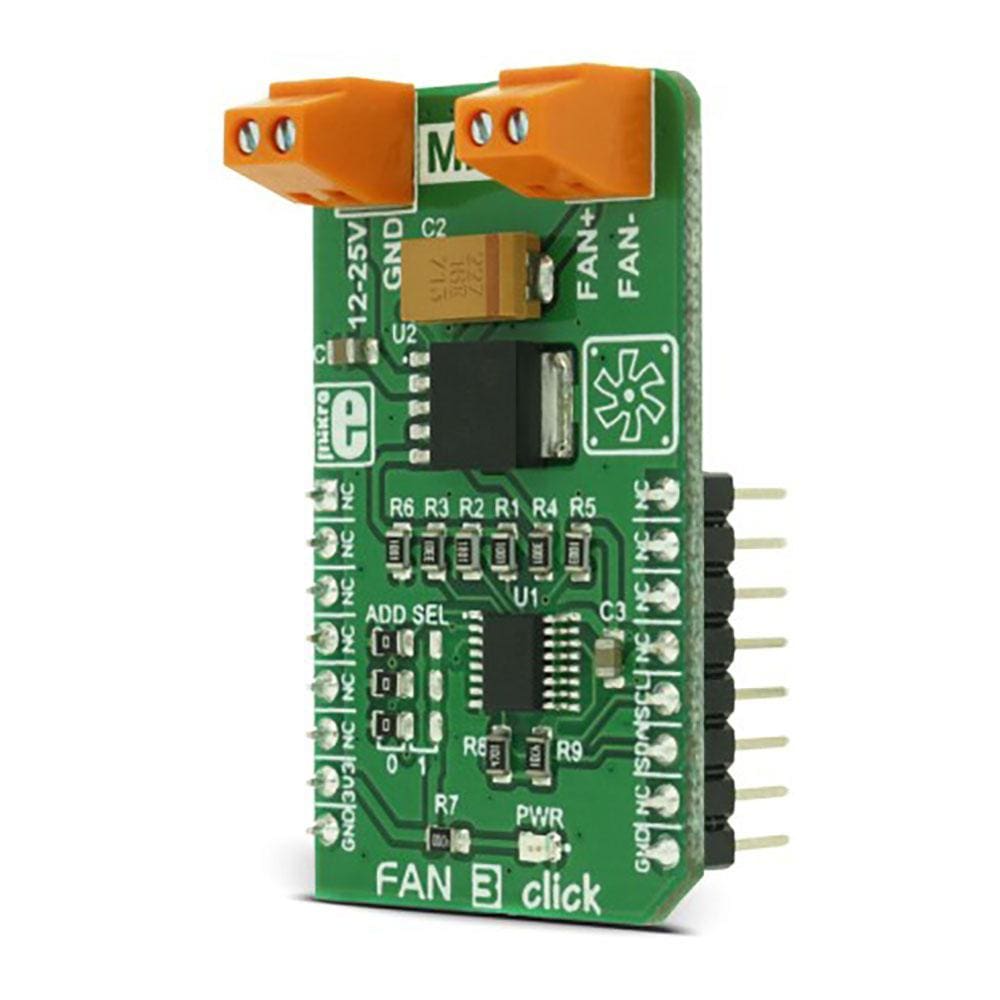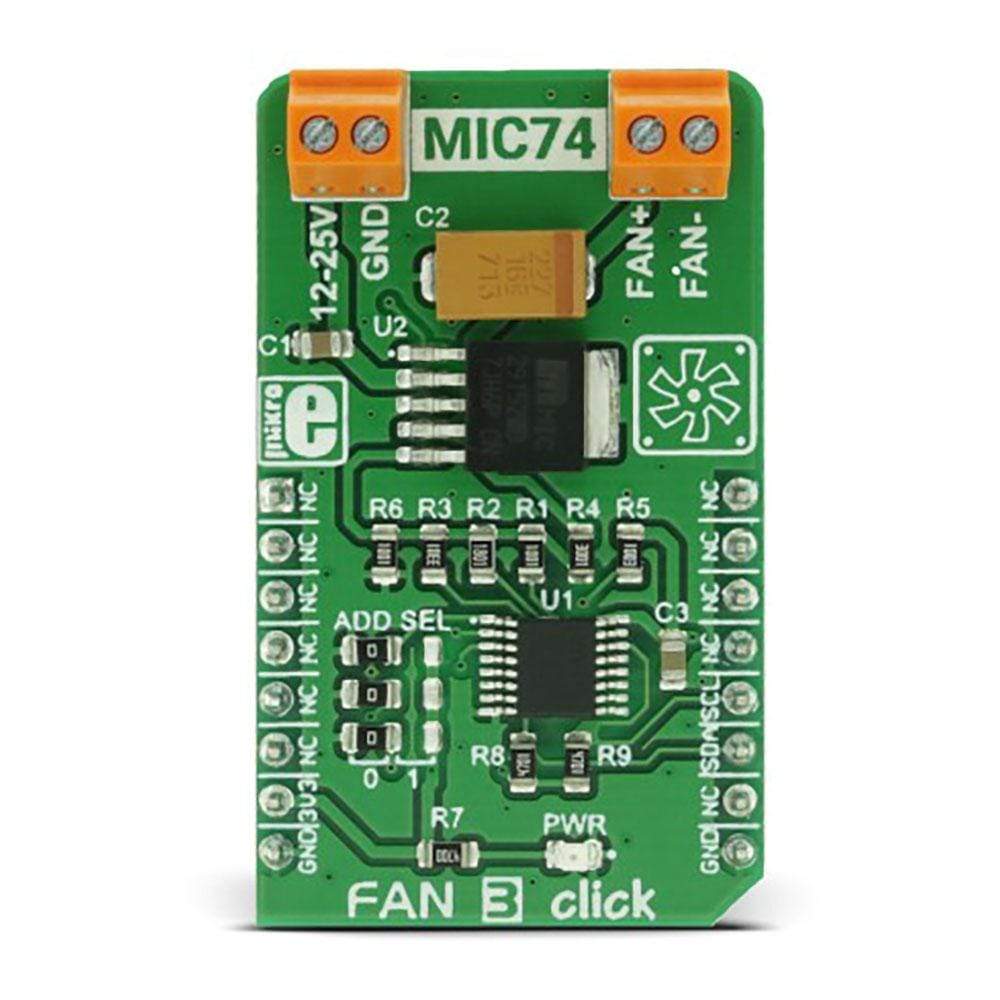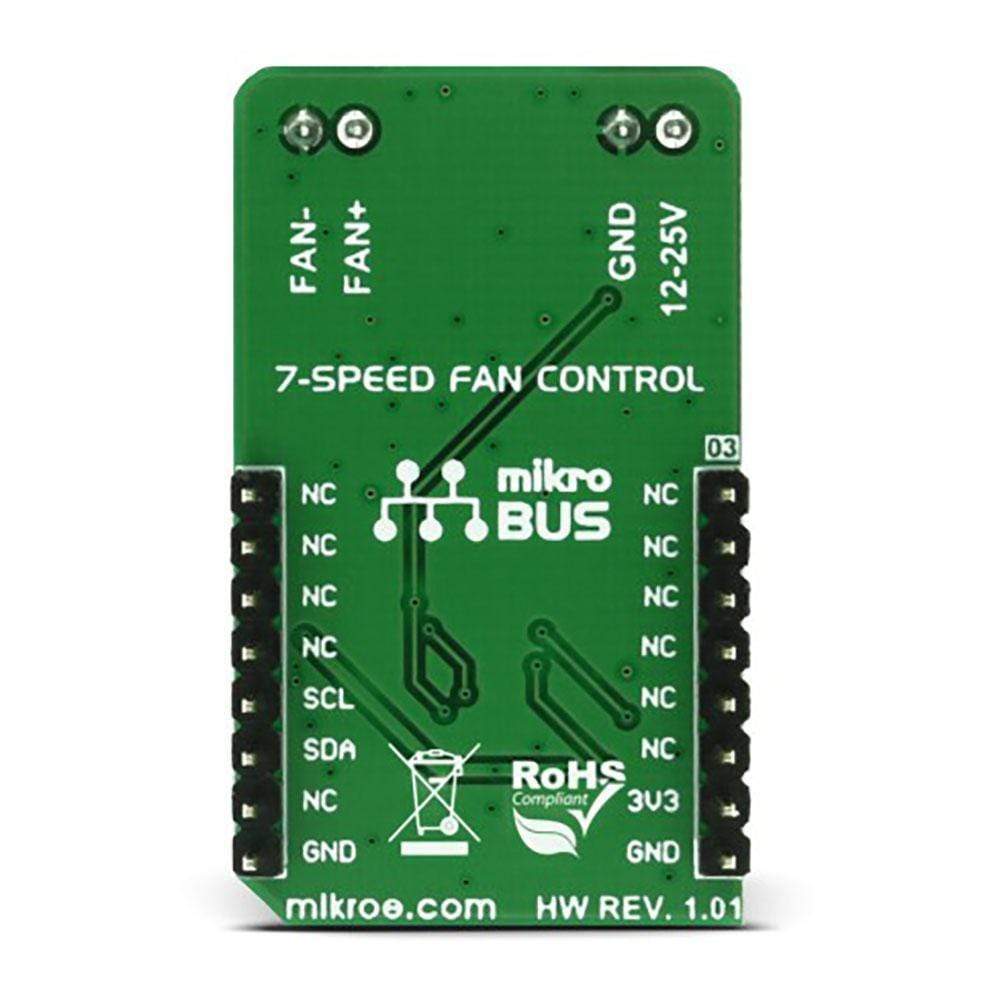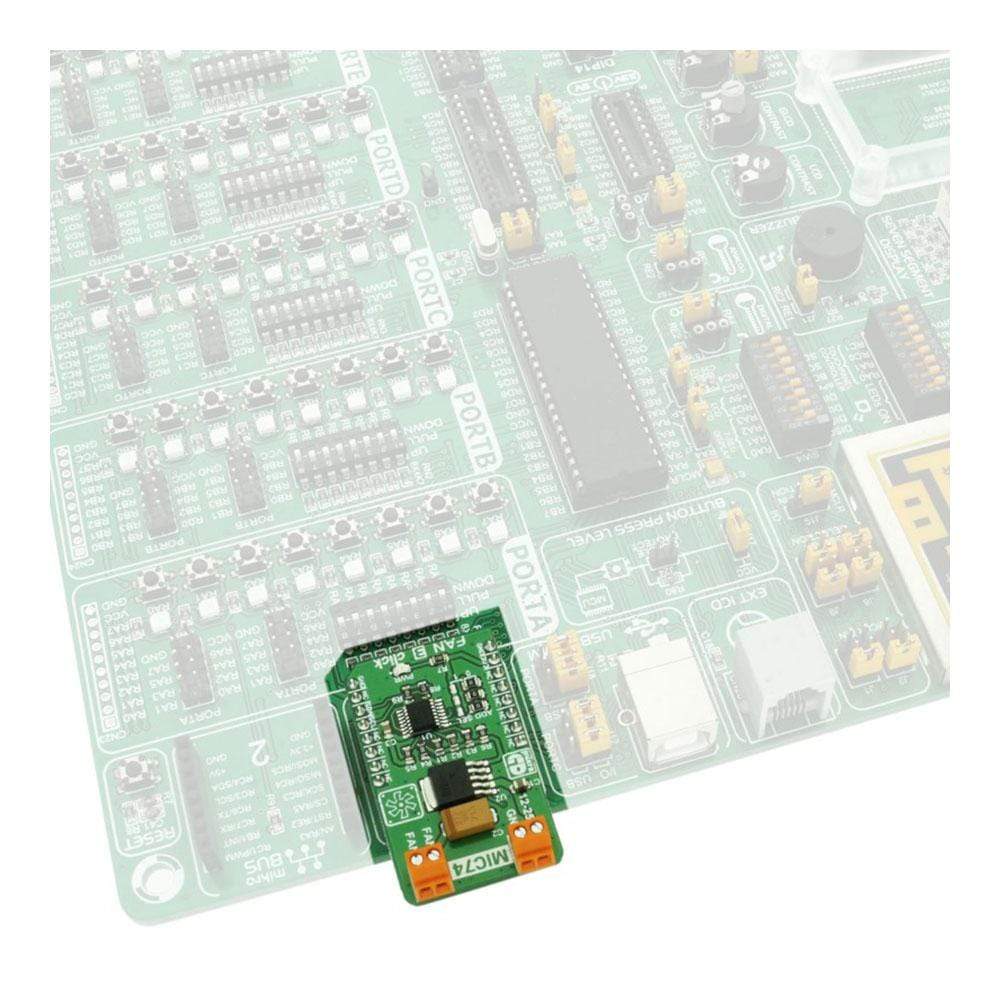



Overview
The Fan 3 Click Board™ is the perfect choice for speed control and it can operate in seven discrete speed steps. Unlike the PWM regulation which can sometimes cause the infamous coil whining effect on some types of fans, this Click Board™ outputs the selected voltage via the MIC29152 voltage regulator from Microchip, driven through the MIC74 - a serial to parallel I/O expander and a fan controller from the same company, keeping it constant at the output.
The Fan 3 Click Board™ works with 12V to 25V on its input connector and can be used whenever a noiseless solution with a variable fan speed is needed, for example - cooling of electronic components with the minimal possible noise produced.
Downloads
Das Fan 3 Click Board™ ist die perfekte Wahl für die Drehzahlregelung und kann in sieben diskreten Drehzahlstufen betrieben werden. Anders als die PWM-Regelung, die bei manchen Lüftertypen manchmal den berüchtigten Spulenfiepeffekt verursachen kann, gibt dieses Click Board™ die ausgewählte Spannung über den Spannungsregler MIC29152 von Microchip aus, der über den MIC74 gesteuert wird – einen seriell-parallelen E/A-Expander und Lüfterregler desselben Unternehmens – und hält sie am Ausgang konstant.
Das Fan 3 Click Board™ arbeitet mit 12 V bis 25 V an seinem Eingangsanschluss und kann immer dann verwendet werden, wenn eine geräuschlose Lösung mit variabler Lüftergeschwindigkeit benötigt wird, zum Beispiel zur Kühlung elektronischer Komponenten mit möglichst geringer Geräuschentwicklung.
| General Information | |
|---|---|
Part Number (SKU) |
MIKROE-2841
|
Manufacturer |
|
| Physical and Mechanical | |
Weight |
0.028 kg
|
| Other | |
Country of Origin |
|
HS Code Customs Tariff code
|
|
EAN |
8606018712076
|
Warranty |
|
Frequently Asked Questions
Have a Question?
Be the first to ask a question about this.




